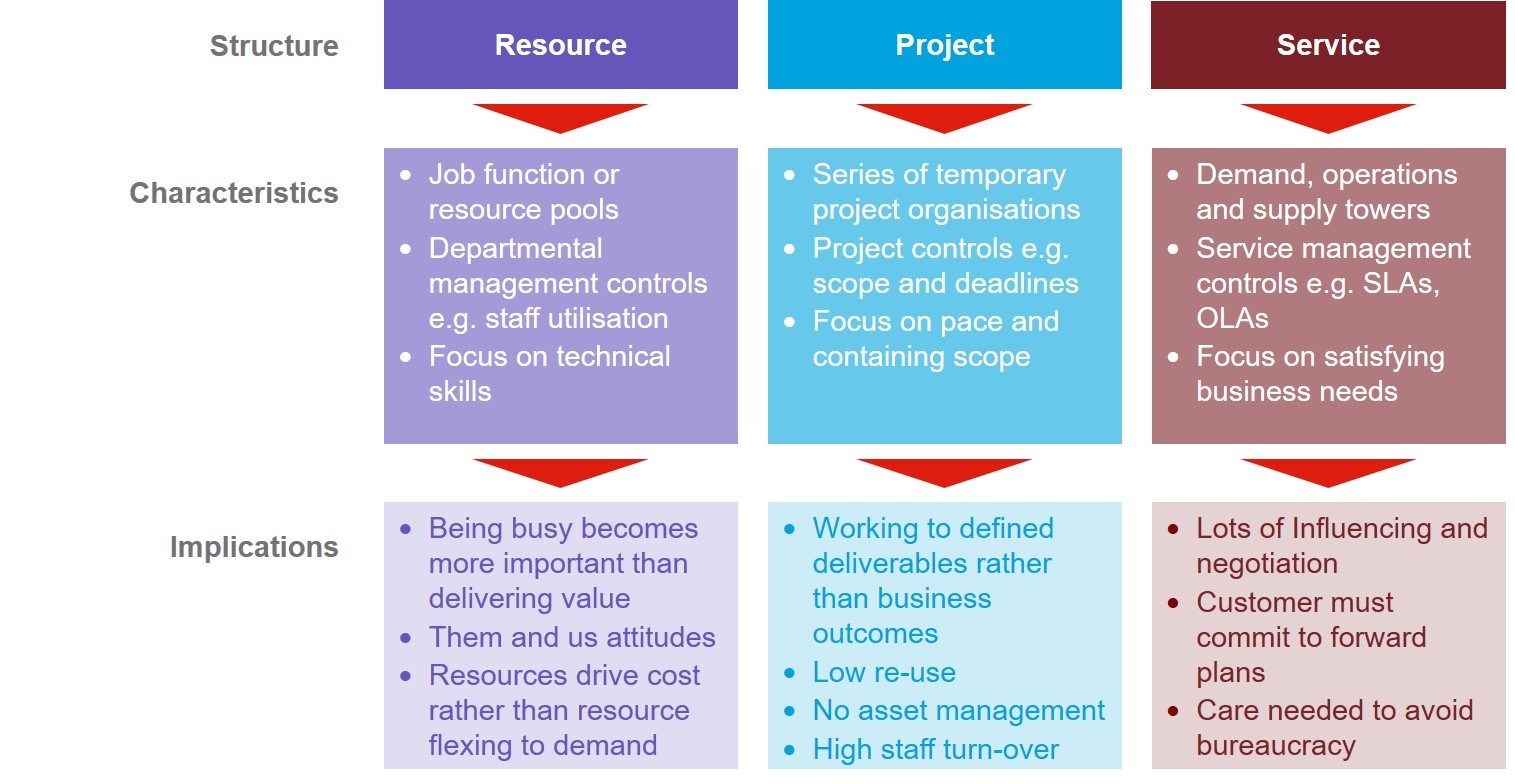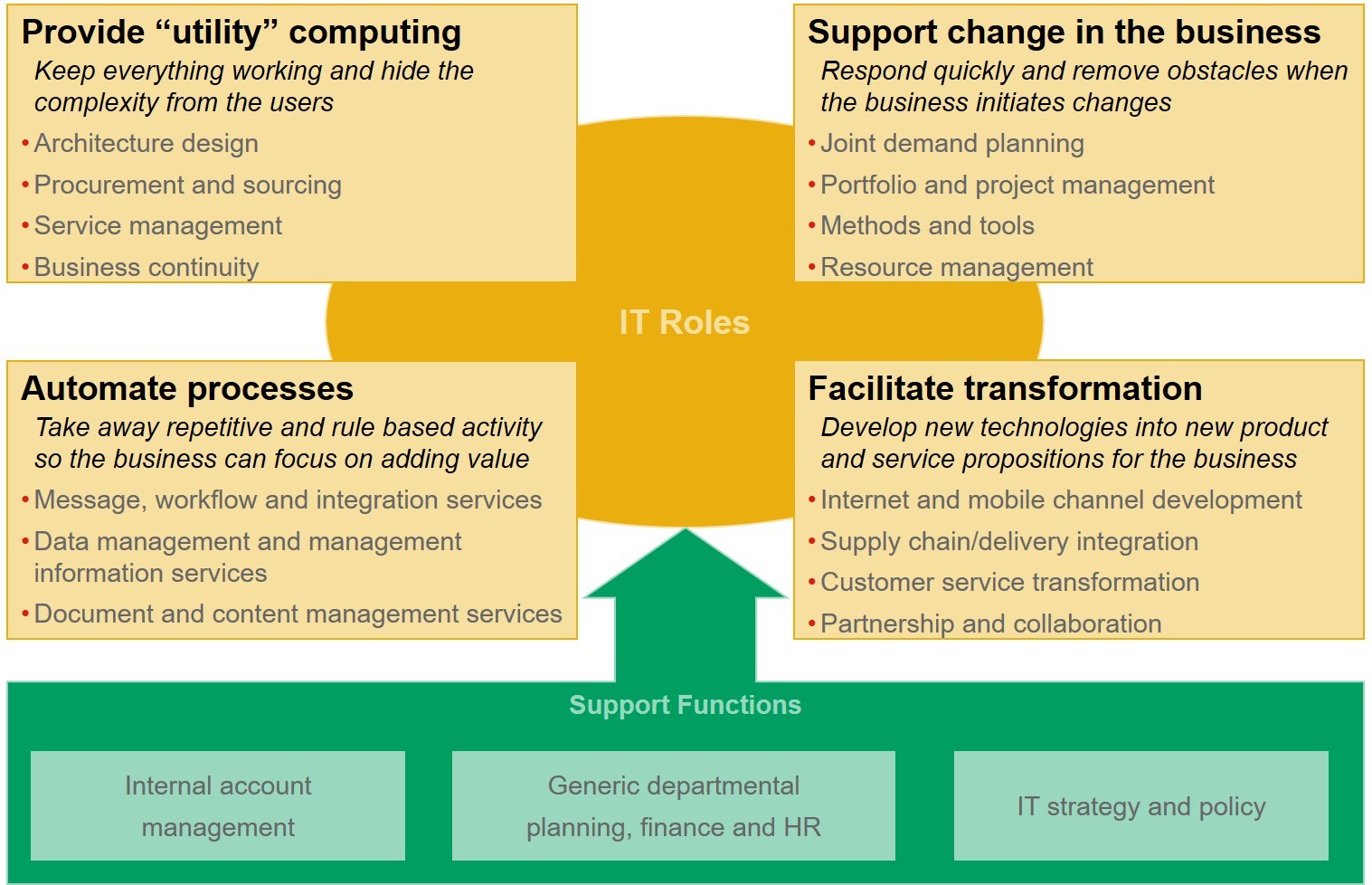Make the IT function service-oriented
Recently I read an article on the on-line version of Forbes by Mark Settle. Mark was proposing an IT operating model which he calls “Broker/Integrate/Orchestrate” as a replacement for a more traditional approach he refers to as “Plan/Build/Run”. The article is well written but I think Mark creates an artificial gulf between these two ways of looking at IT and neglects another useful alternative: an operating model based upon a portfolio of services.
Broker/Integrate/Orchestrate and Plan/Build/Run are both functional models of IT which emphasise an internal view of the functions that an IT department performs. A service-based operating model emphasises the external view of what the IT department provides to service consumers whether they are staff within the business, end-customers or other stakeholders.
“Service” gets used a lot in different contexts so for this blog I am using the word in the sense of “providing a valuable capability to satisfy a need” (or for something more formal look at the Open Group’s definition). In this context “service” is not about cloud computing (IaaS, Pass, SaaS) or architecture (Service Oriented Architecture) but these may be among the catalogue of valuable things that IT provides. “Service” should not be confused with “subservient”. Organising IT around “services” does not mean giving up any kind of control or influence. If you have been through security screening at an airport, made an insurance claim or dealt with the tax authorities you will know that consumers of these services do not get everything their own way. There are clear expectations and rules of engagement. “Service” in the context of the IT operating model should also exhibit this balance.
A service-based operating model for IT draws attention to capabilities which are provided through IT and reduces the emphasis on how these are sourced. It also draws attention to the value and importance of what IT contributes rather than the mechanics of how it is done. An top-level example is illustrated below.
A service-based operating model has a direct impact on communication and decision making.
- Strategy execution: Using services helps to provide clarity about what IT is and is not going to do in support of the enterprise strategy.
- Capacity planning: The operating model establishes a clear line of sight across the whole IT value chain and builds a bridge between demand in service terms and supply in terms of people, assets and products.
- Stakeholder engagement: The model provides a practical framework for governance and other kinds of stakeholder engagement which general business executives and IT professionals can grasp.
In addition there are often indirect and subtle implications in the way people behave in response to the operating model. Do you recognise these characterisations?

Related blog posts: How IT and the Role of the CIO is Changing in the Era of Networked Organizations by Dion Hinchcliffe

